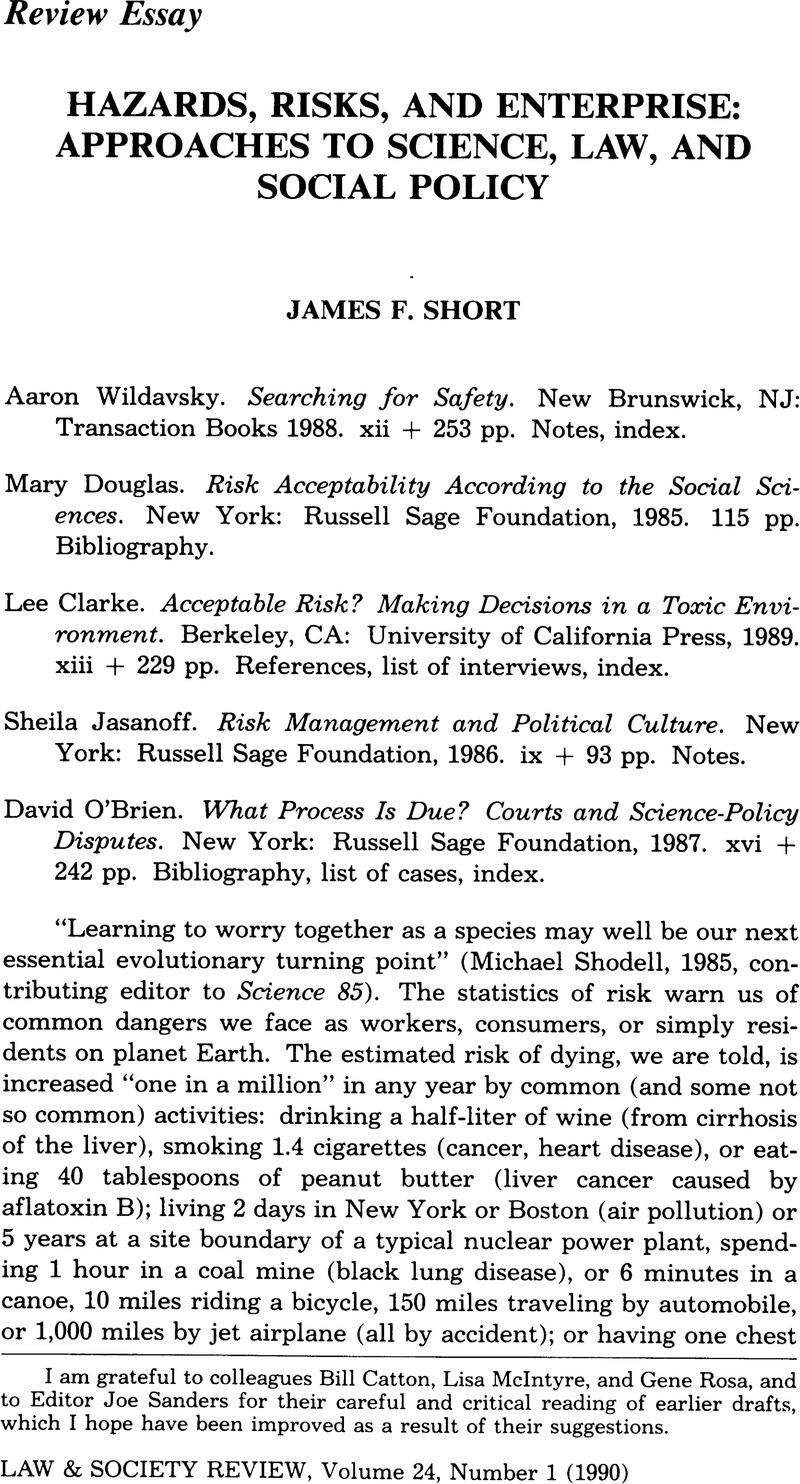Crossref Citations
This article has been cited by the following publications. This list is generated based on data provided by Crossref.
Tomkins, Alan J.
Victor, Bart
and
Adler, Robert
1992.
Handbook of Psychology and Law.
p.
523.
Handmer, John W.
and
Dovers, Stephen R.
1996.
A Typology of Resilience: Rethinking Institutions for Sustainable Development.
Industrial & Environmental Crisis Quarterly,
Vol. 9,
Issue. 4,
p.
482.
Etienne, Julien
2008.
Knowledge transfer in organisational reliability analysis: From post-accident studies to normal operations studies.
Safety Science,
Vol. 46,
Issue. 10,
p.
1420.
Andrianova, Elena V.
Davydenko, Vladimir A.
and
Ushakova, Yulia V.
2022.
Food security risks in the context of a new global reality.
Tyumen State University Herald. Social, Economic, and Law Research,
Vol. 8,
Issue. 2,
p.
6.



